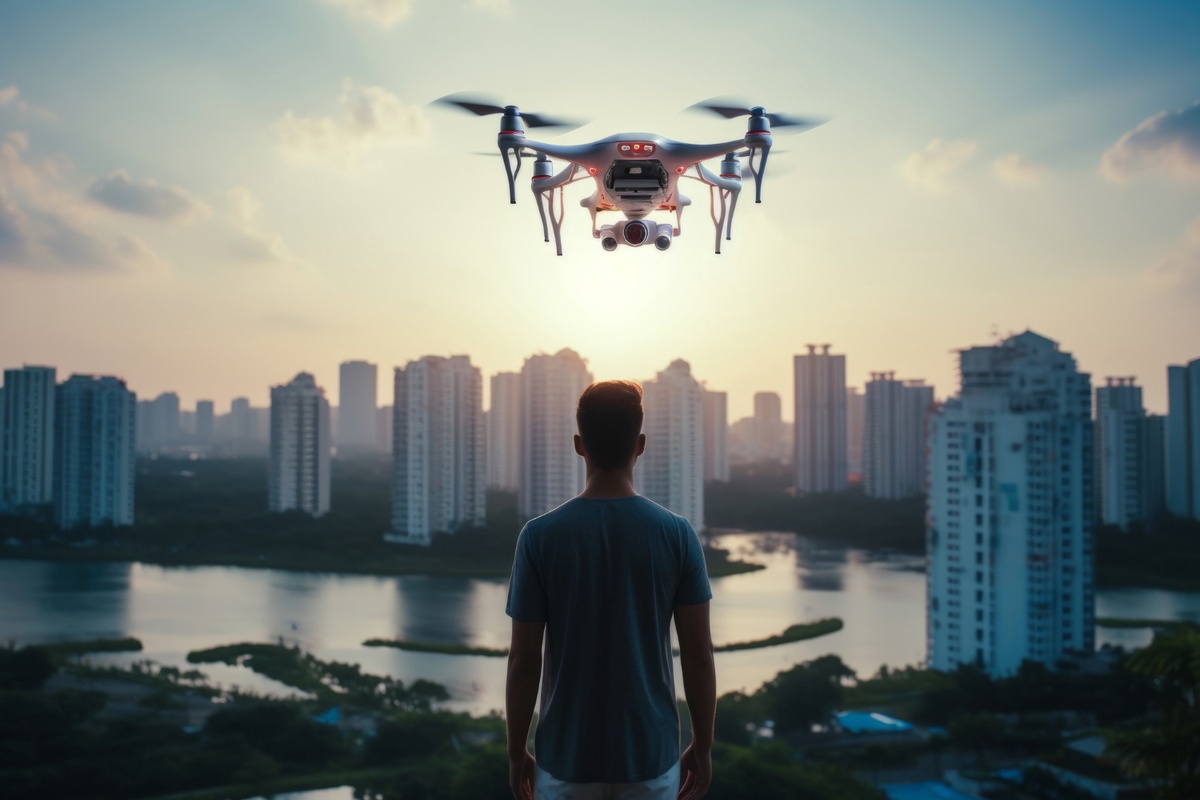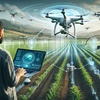Hey there, drone enthusiasts! Chris here, a retired consultant from the world of USB cameras. After a decade of helping businesses find the perfect camera solutions, I'm still fascinated by the ever-evolving drone industry. One particularly exciting area is the integration of USB Camera 3.0 technology with Augmented Reality (AR) to revolutionize drone operations.
Let's take a deep dive into how this powerful combo is transforming the way we fly!
The Power of USB Camera 3.0 for Drone Applications
Before we delve into AR, let's talk about the foundation – the USB Camera 3.0 itself. This technology offers significant advantages for drone applications compared to older USB 2.0 cameras:
-
Superior Speed and Image Quality: USB 3.0 boasts significantly faster data transfer rates compared to USB 2.0. This translates to smooth, high-resolution video feeds crucial for capturing intricate details during flight. Imagine the difference between seeing a blurry blob and a clear, identifiable object on your screen – a critical factor for tasks like search and rescue or infrastructure inspection.
-
Reduced Latency: Latency refers to the time delay between an action and its visual representation. USB 3.0 minimizes latency, ensuring near real-time video transmission. This is vital for maintaining precise control over your drone, especially during high-speed maneuvers or navigating through complex environments.
-
Plug-and-Play Simplicity: Just like any standard USB camera, USB 3.0 cameras offer the convenience of plug-and-play functionality. This eliminates the need for complex driver installations, allowing for quick and easy deployment in the field.
Enter Augmented Reality: Seeing Beyond the Lens
Now, let's add another layer of magic – Augmented Reality (AR). AR overlays digital information onto the real world through a headset or display. In the context of drones, imagine this:
-
Real-time Flight Data: Essential flight data like altitude, speed, battery life, and GPS coordinates can be overlaid onto your live camera feed. This keeps critical information readily available without needing to toggle between different screens, enhancing situational awareness for the pilot.
-
Enhanced Navigation Cues: AR can project virtual waypoints or flight paths directly onto the live video feed, guiding you through complex flight maneuvers or pre-programmed routes. This can be immensely helpful for beginners or when operating in low-visibility conditions.
-
Object Recognition and Identification: Imagine your AR system highlighting and identifying objects in real-time through the camera feed. This has applications in search and rescue missions, where spotting a missing person amidst dense foliage becomes significantly easier. Similarly, for infrastructure inspections, AR can recognize and label potential damage, streamlining the inspection process.
Real-World Examples: The Future is Now
The integration of USB Camera 3.0 and AR in drone operations isn't just science fiction. Here are some real-world examples:
-
Precision Agriculture: Drones equipped with this technology can map fields, identify areas requiring additional fertilizer or irrigation, and even monitor crop health.
-
Search and Rescue: Faster object recognition and real-time data overlays can significantly improve search efficiency and response times during critical rescue missions.
-
Infrastructure Inspection: Detailed inspections of bridges, pipelines, or wind turbines become safer and more efficient with AR-assisted drones. Imagine pinpointing potential cracks or damage directly on the live video feed, allowing for targeted maintenance.
Looking Ahead: The Sky's the Limit
The possibilities are truly endless. As USB Camera 3.0 technology continues to evolve, offering even faster data transfer rates and higher resolutions, AR integration will become even more sophisticated. We can expect features like:
-
3D Object Reconstruction: Imagine creating a 3D model of a building or structure in real-time using the drone's camera feed and AR processing.
-
Real-time Environmental Data Overlays: Overlaying temperature, humidity, or air quality data onto the live video feed can be invaluable for environmental monitoring and research applications.
A Final Word: A New Era for Drone Operations
The combination of USB Camera 3.0 and AR is ushering in a new era for drone operations. It empowers pilots with a heightened level of situational awareness, improves flight control, and opens doors for innovative applications across various industries.


No comments yet